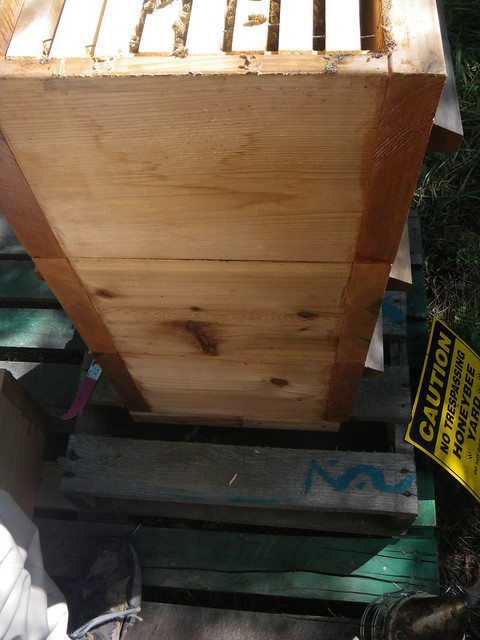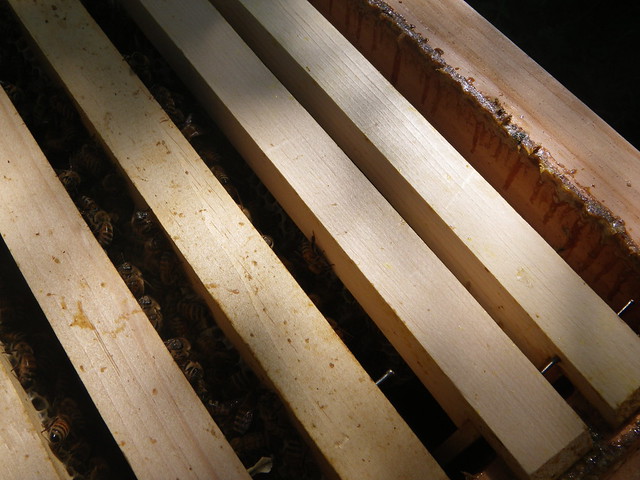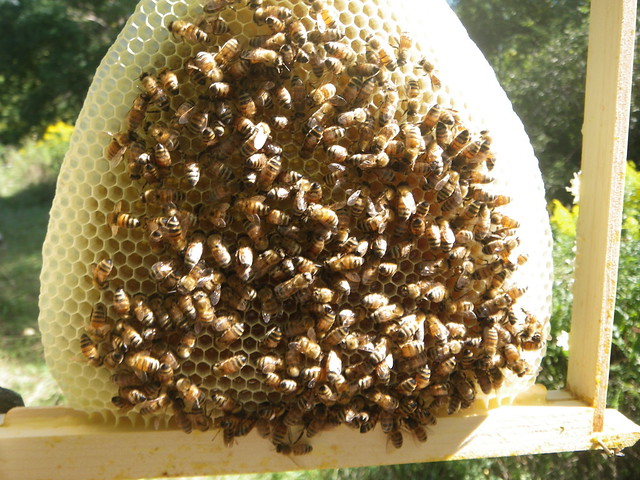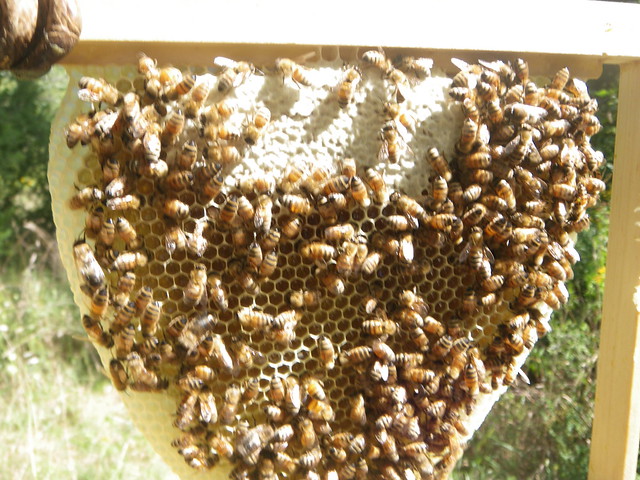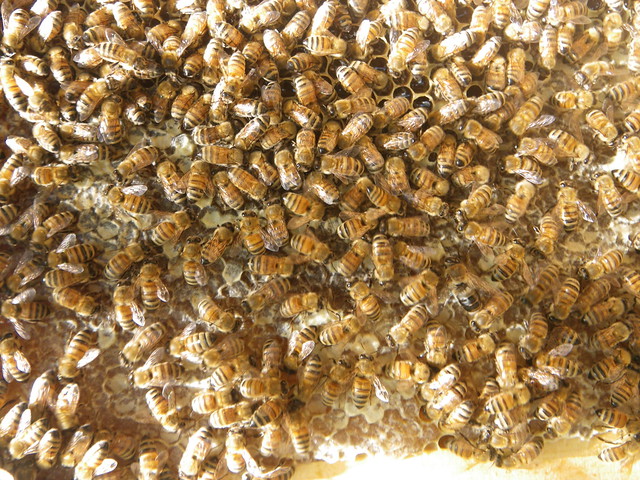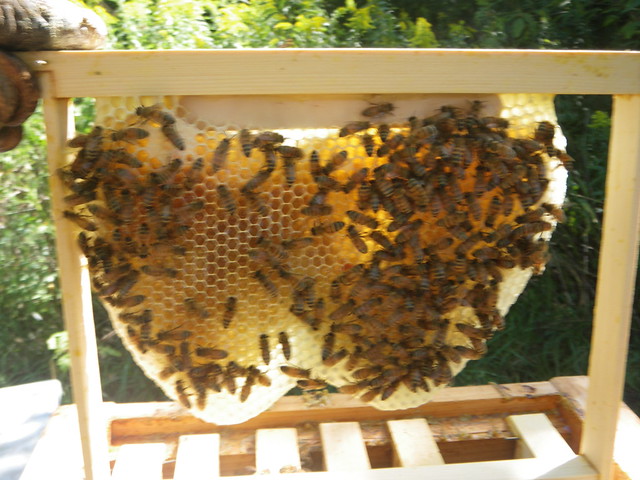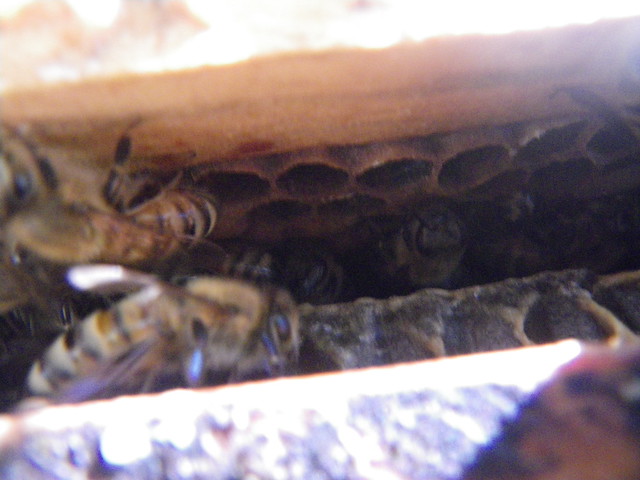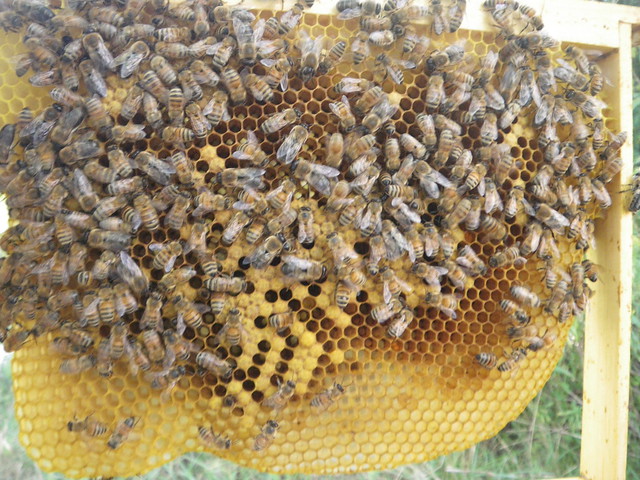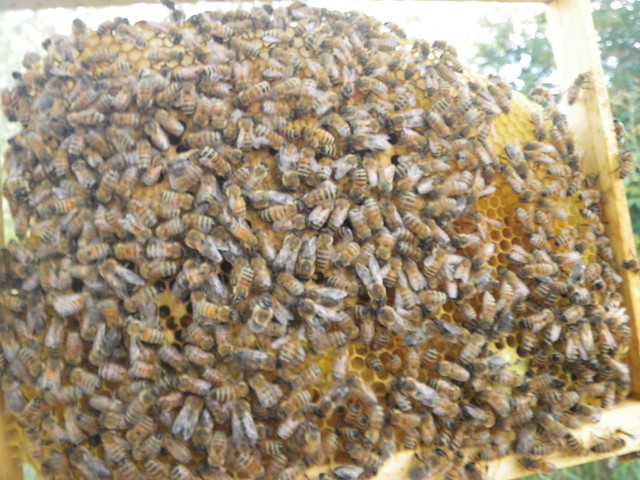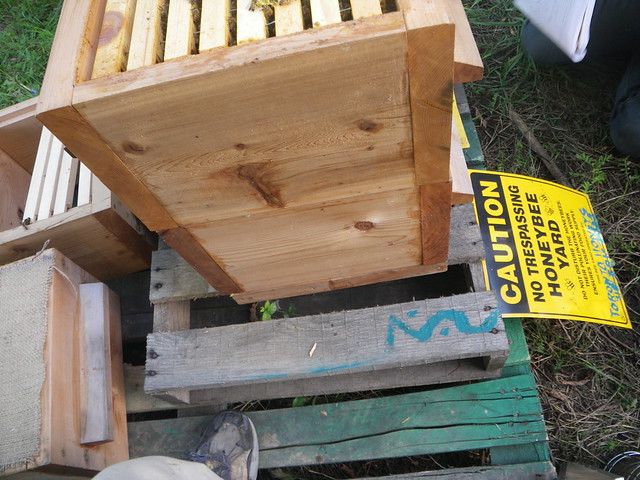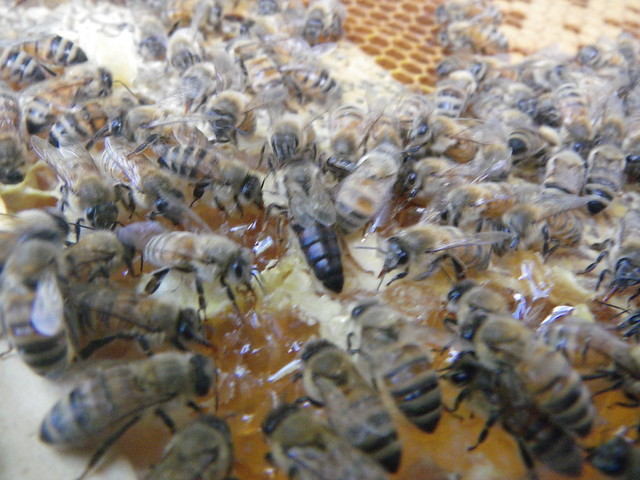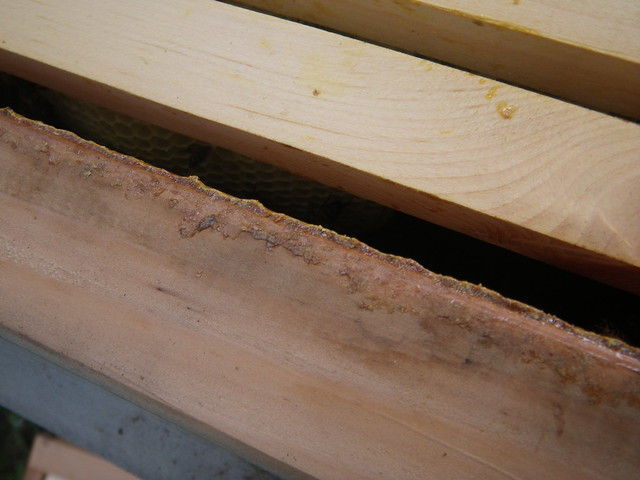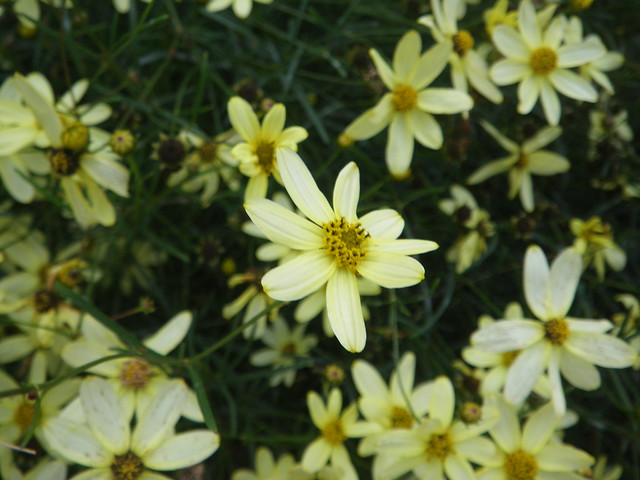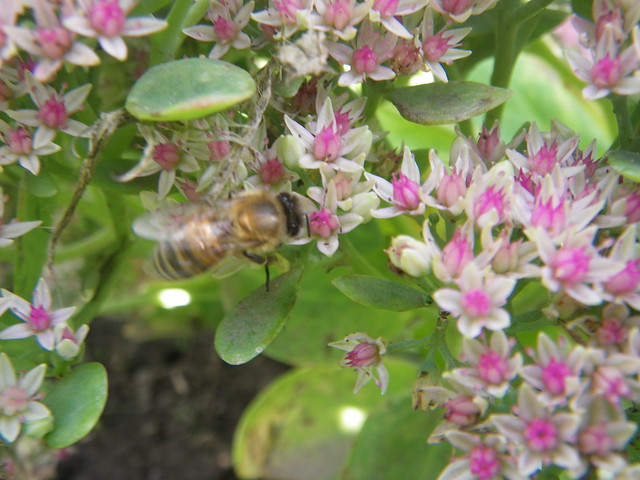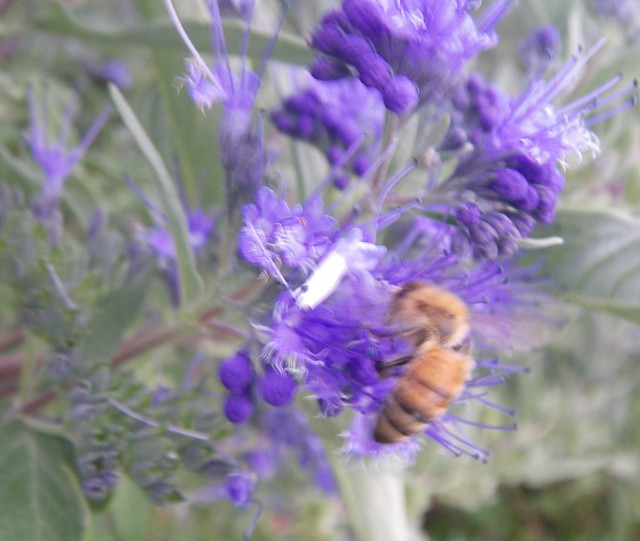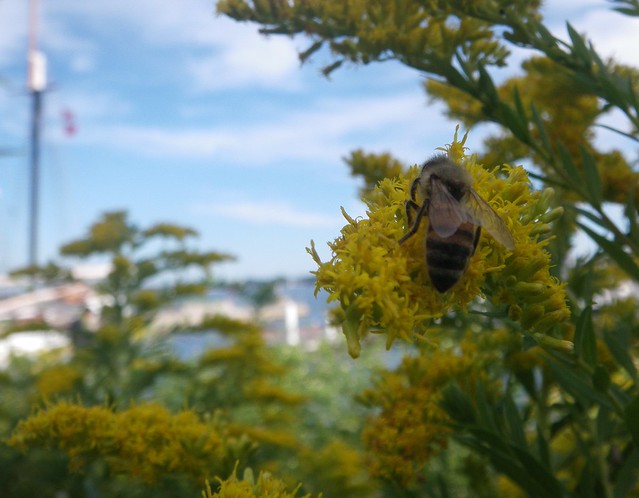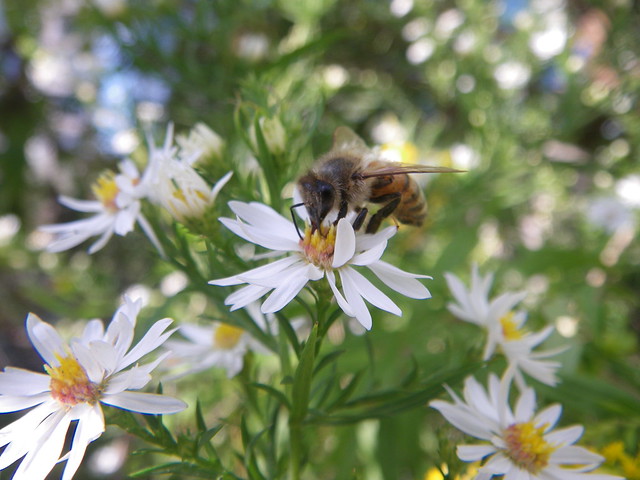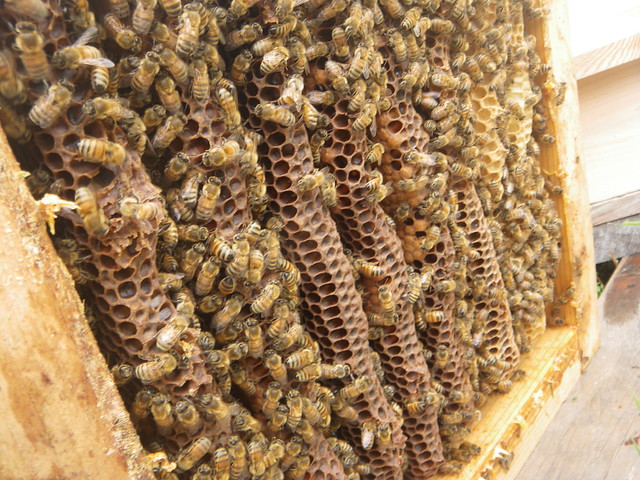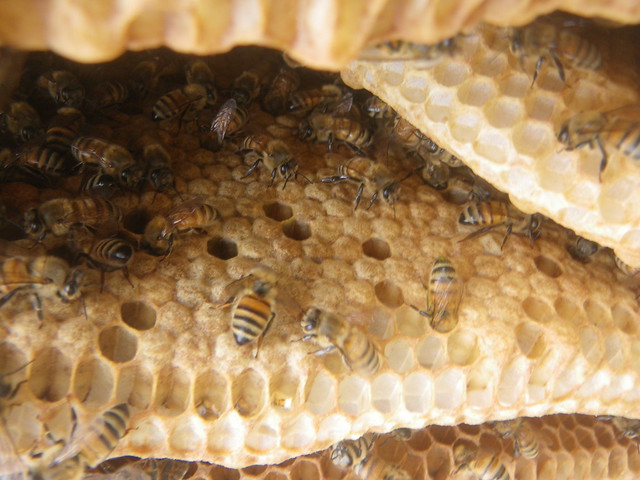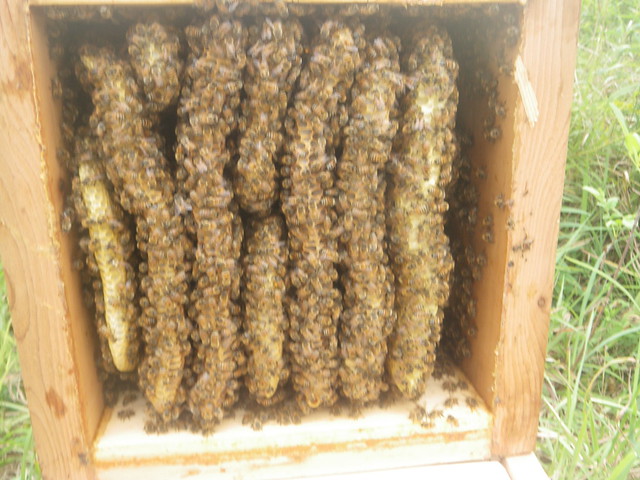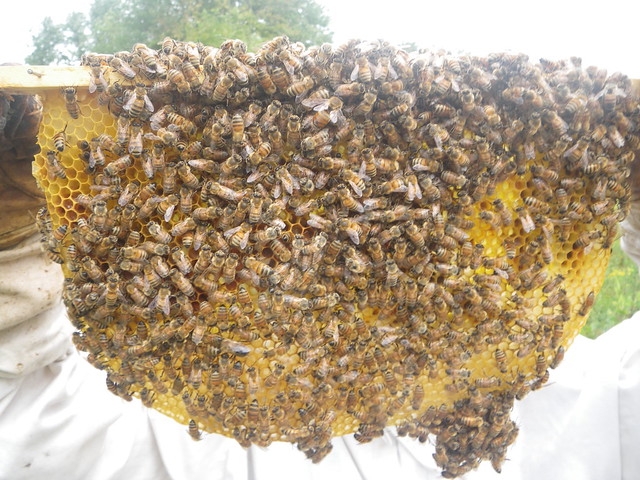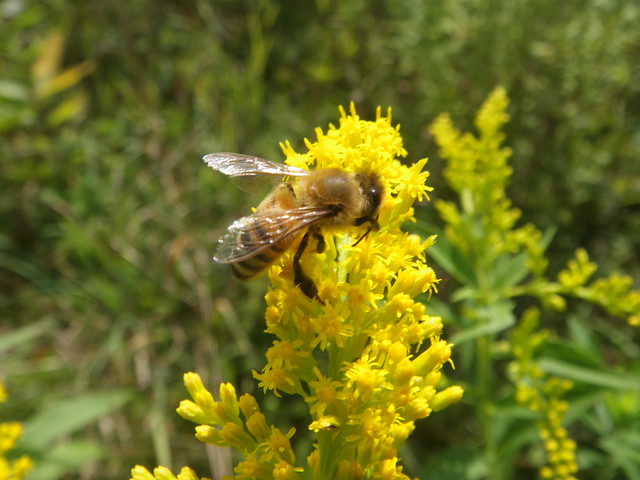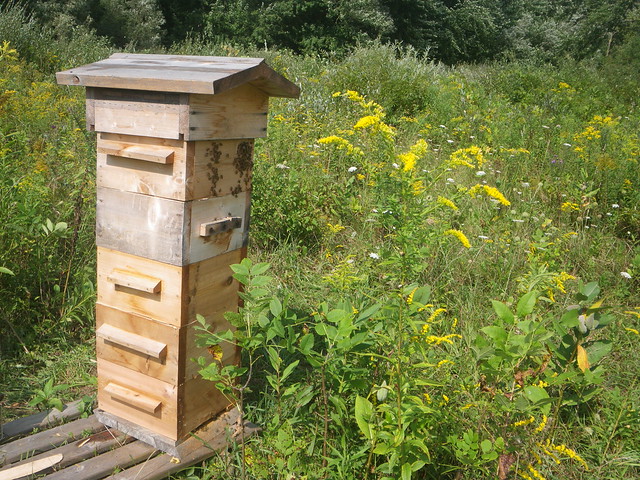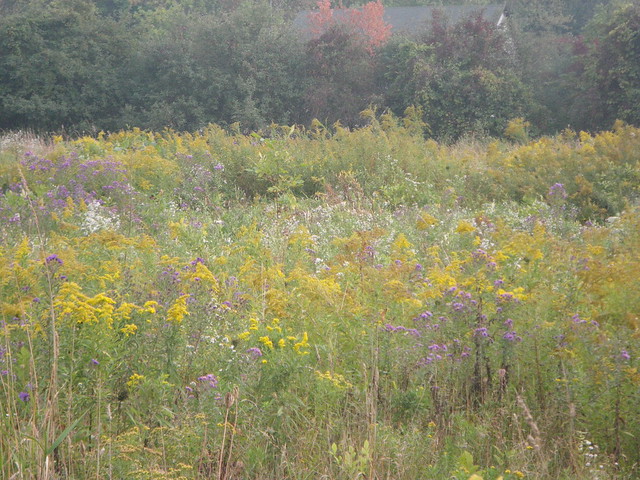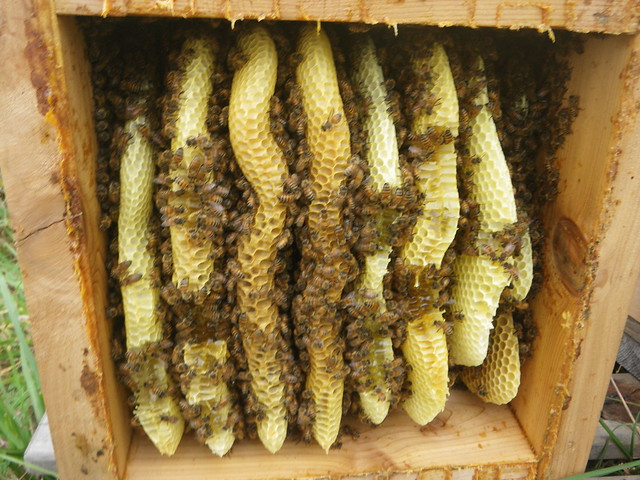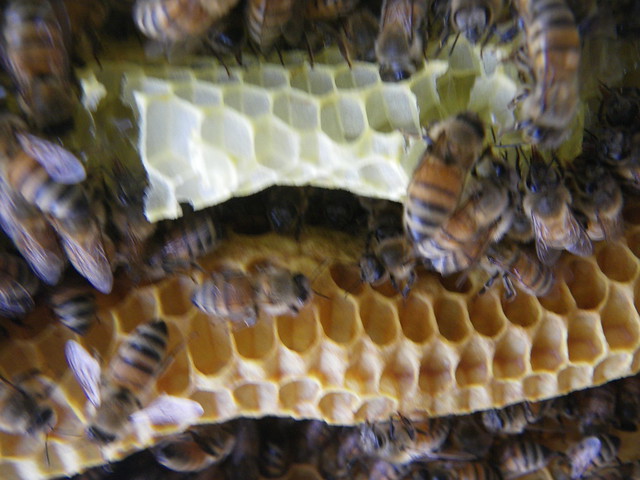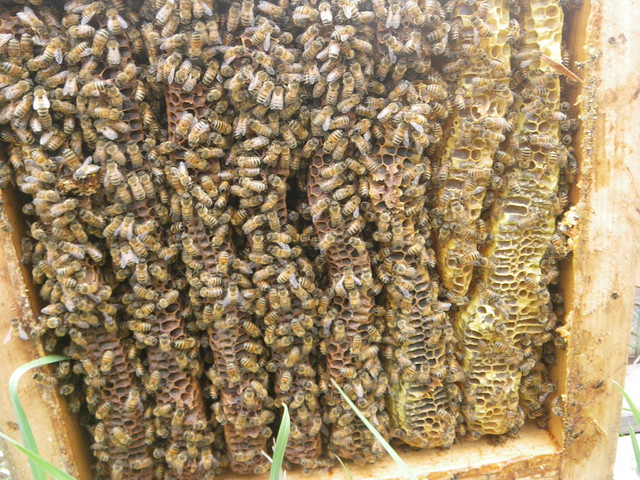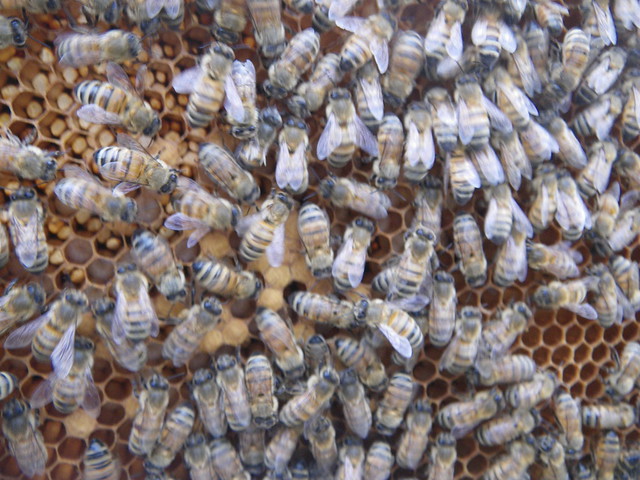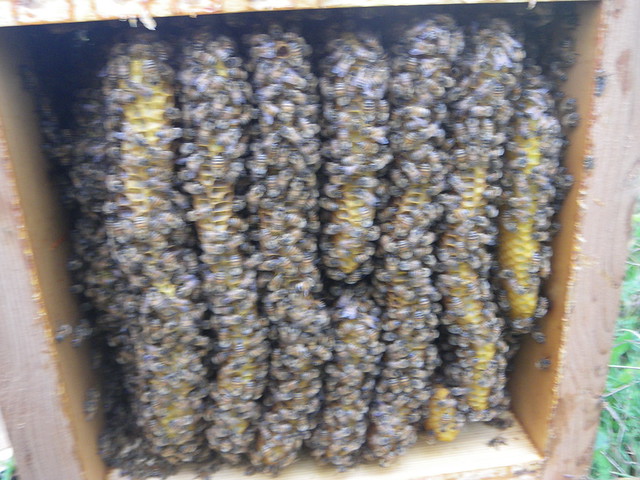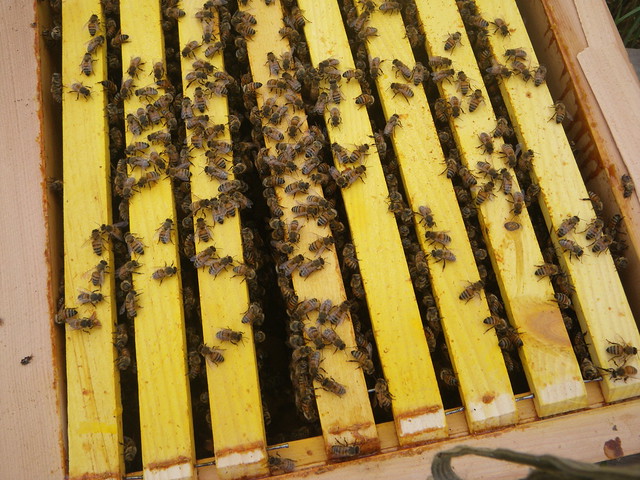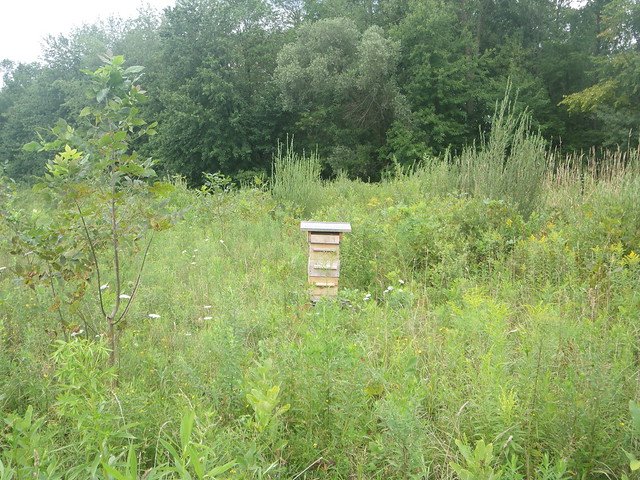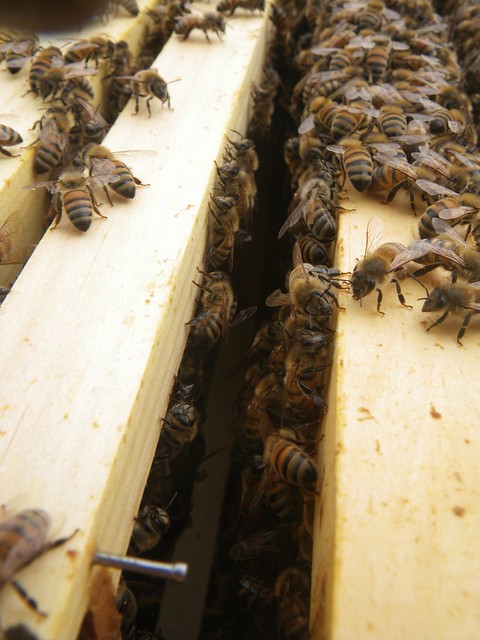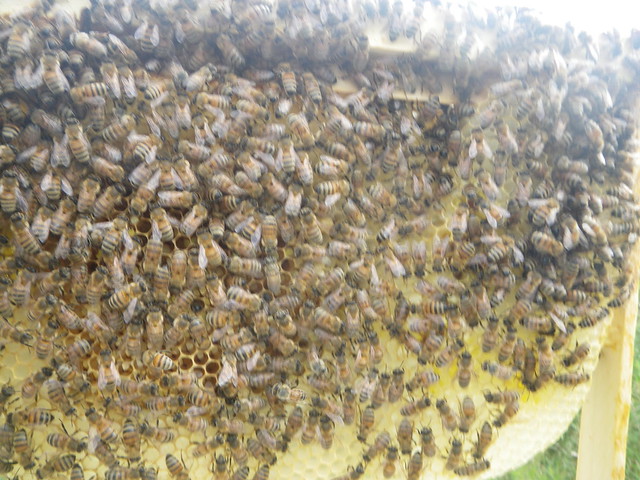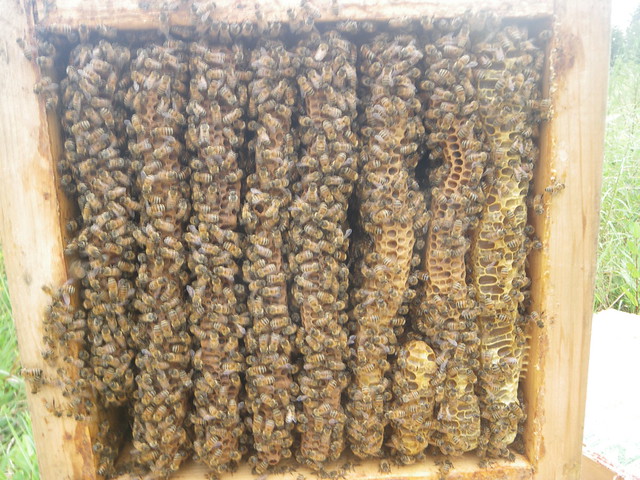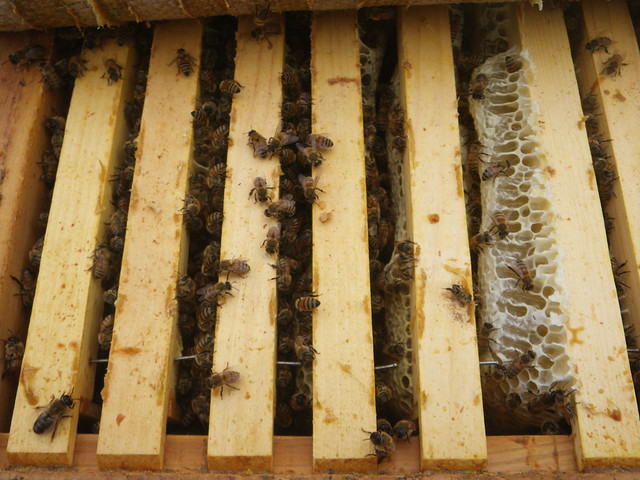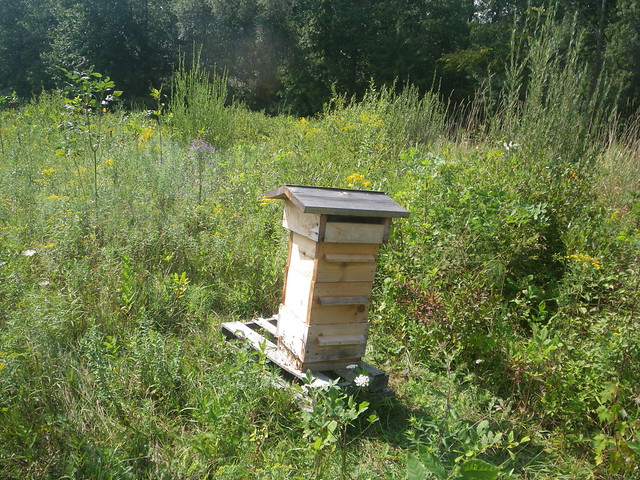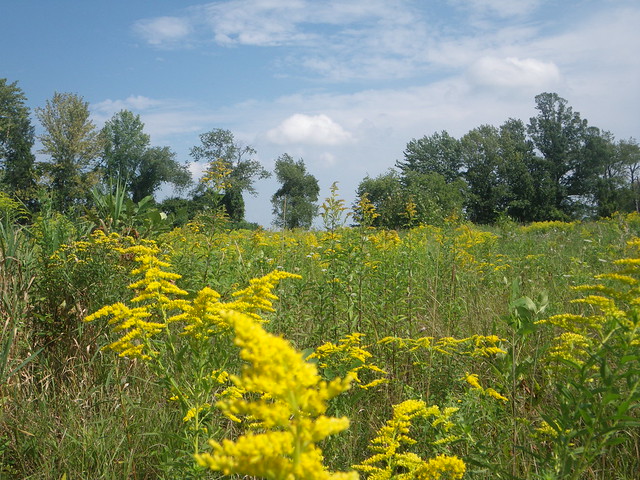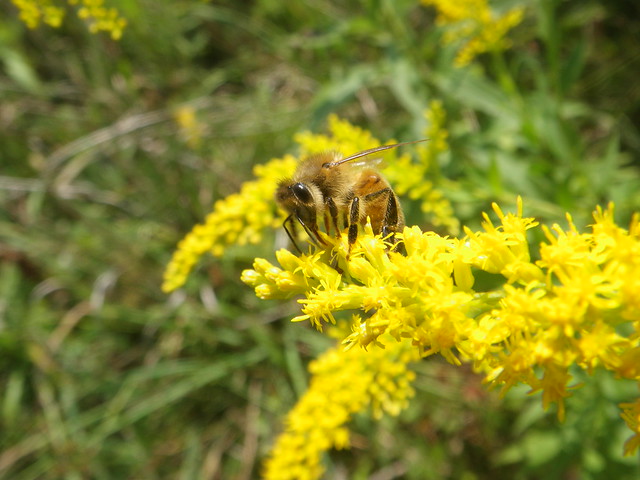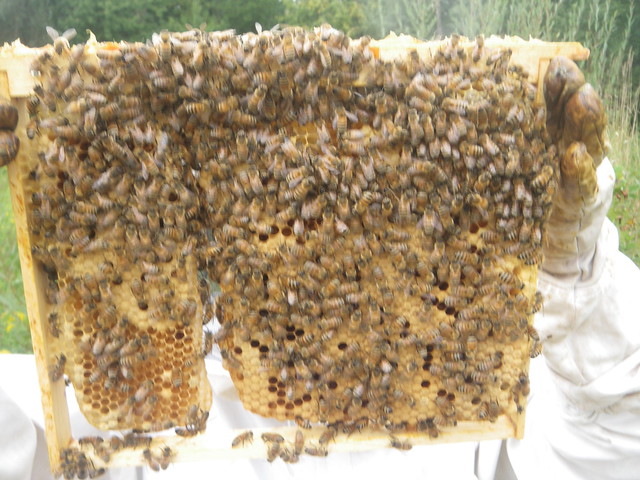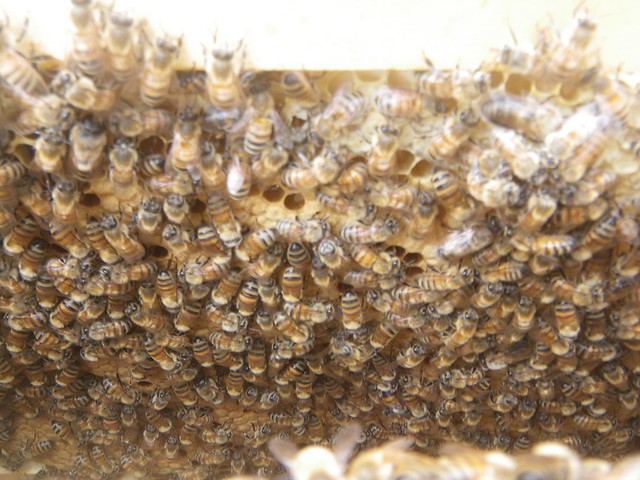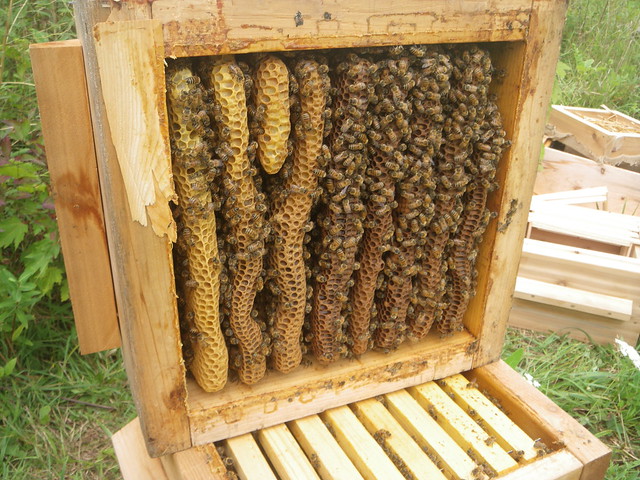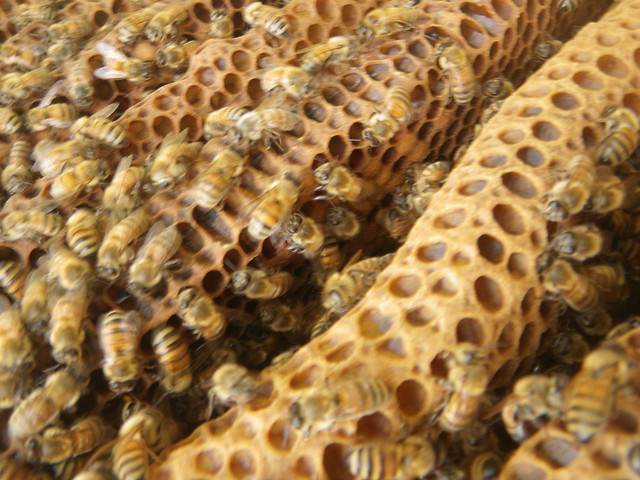September 20
Drones on the bottom board. No doubt they are being corralled out of the hive.
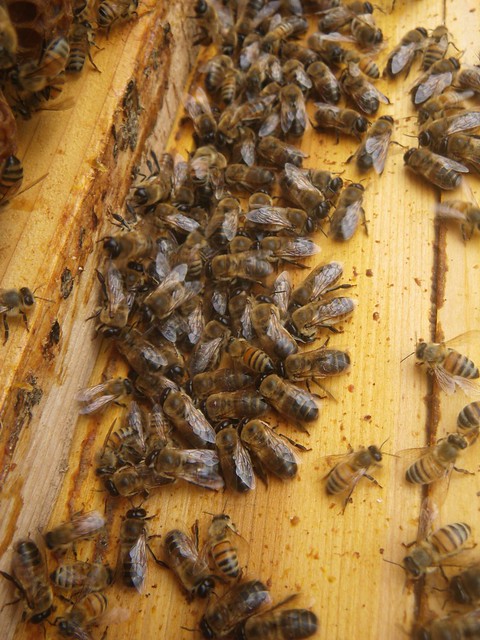 Photo by: Shawn Caza / CC: Attribution-NonCommercial-ShareAlike License
Photo by: Shawn Caza / CC: Attribution-NonCommercial-ShareAlike License
No signs that any honey had been stored in the bottom box
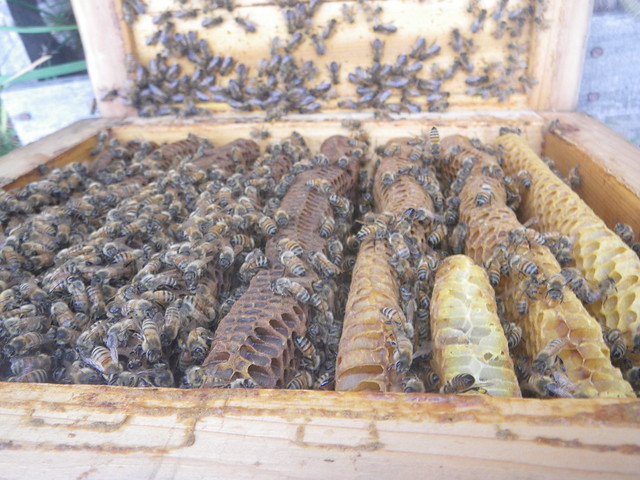 Photo by: Shawn Caza / CC: Attribution-NonCommercial-ShareAlike License
Photo by: Shawn Caza / CC: Attribution-NonCommercial-ShareAlike License
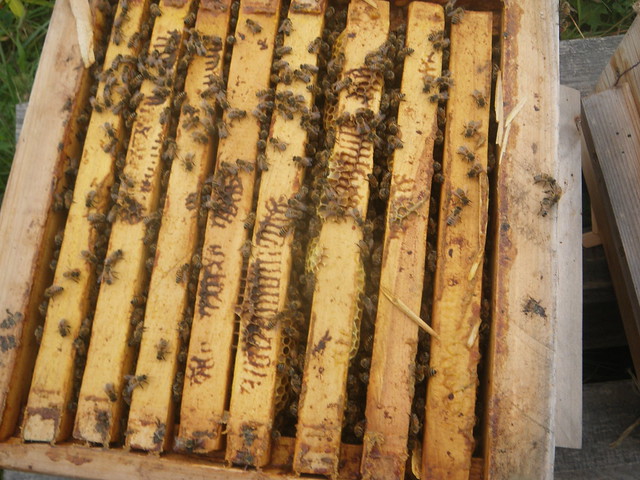 Photo by: Shawn Caza / CC: Attribution-NonCommercial-ShareAlike License
Photo by: Shawn Caza / CC: Attribution-NonCommercial-ShareAlike License
The middle box still had some honey, but no evidence they had replaced any of the honey they ate in August.
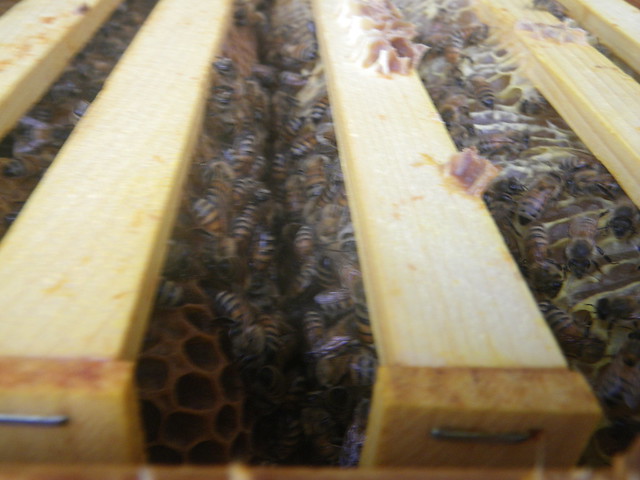 Photo by: Shawn Caza / CC: Attribution-NonCommercial-ShareAlike License
Photo by: Shawn Caza / CC: Attribution-NonCommercial-ShareAlike License
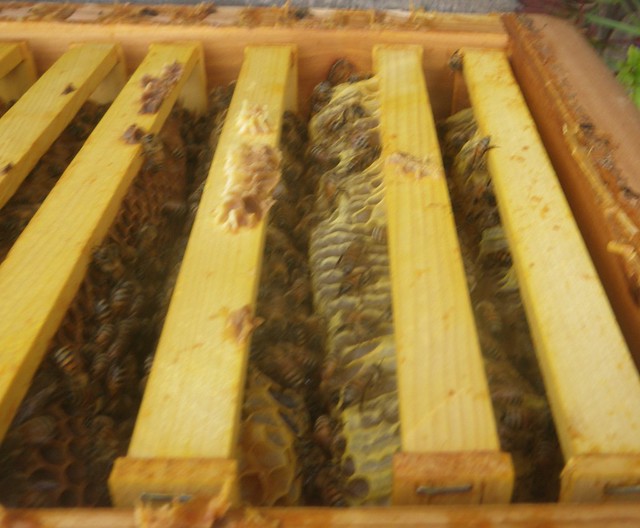 Photo by: Shawn Caza / CC: Attribution-NonCommercial-ShareAlike License
Photo by: Shawn Caza / CC: Attribution-NonCommercial-ShareAlike License
The box we had moved to the top last time still only contained a few combs and a small amount of nectar. So we moved it back to the bottom, thinking the bees will move the nectar up and we will be able to remove this box in the future.
 Photo by: Shawn Caza / CC: Attribution-NonCommercial-ShareAlike License
Photo by: Shawn Caza / CC: Attribution-NonCommercial-ShareAlike License
Only one comb in this box had been used for brood. The average cell size for seventeen cells in this photo seems to be around 5.26.
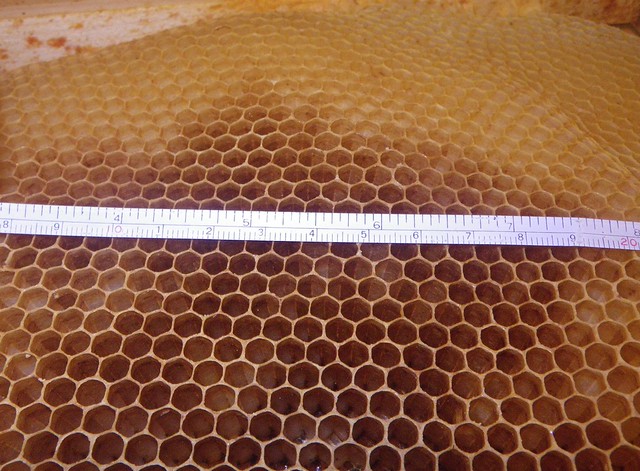 Photo by: Shawn Caza / CC: Attribution-NonCommercial-ShareAlike License
Photo by: Shawn Caza / CC: Attribution-NonCommercial-ShareAlike License
This is the brood comb that was originally started in the box where every other frame contained nectar or honey.
September 29 - October 12
The bottom box was found empty and removed. The queen was spotted laying on the eastern edge of the top box. Looking at her gave me little doubt she is the same queen we saw in the spring and that no supercedure had taken place.
As the hive was too light for winter we began feeding. 4kg of sugar in a 2:1 syrup mix was given on each of the following days: Sept. 29, Oct. 3 and Oct. 5. On Oct. 5 there were still no signs of capped honey in the bottom box. By Oct. 10th they had only finished about half of the syrup provided during the last visit and I replaced it with another 2kg. By October 12 bees could still be seen drinking from the feeder but almost all of it was still there. The feeder was removed. The hive had gained a reasonable weight by this time, and the smell of ripening honey was present at the entrance. We added an entrance reducer.

